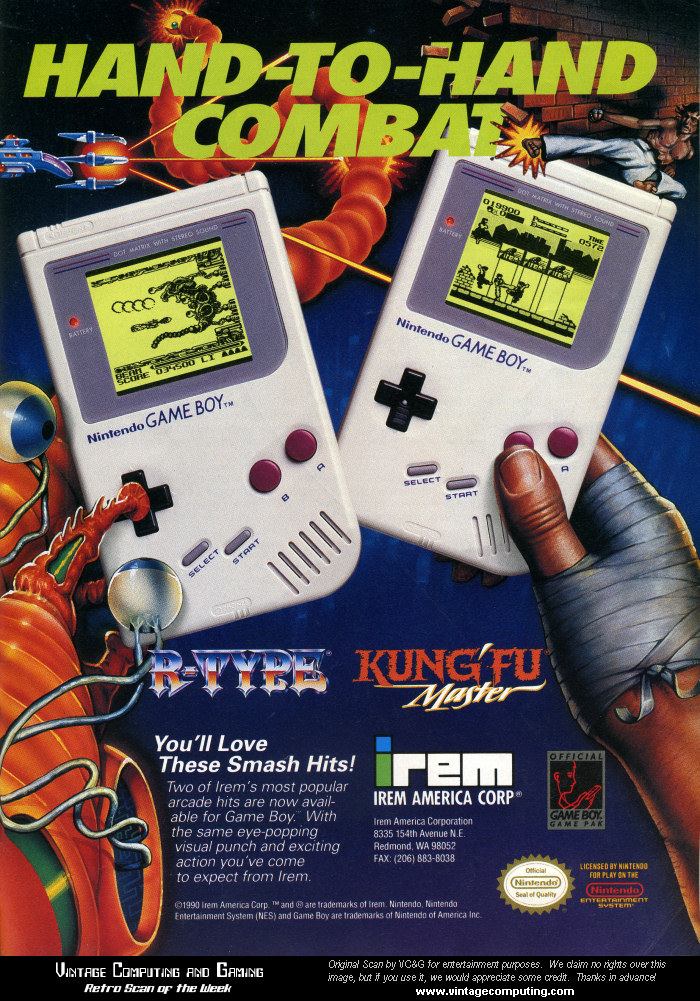90
As games became more graphically sophisticated, the desktop computer did too, so that the remediations were at times mutual. Sometimes the desktop computer would run ahead of the games (the Macintosh interface in 1984 was more graphically sophisticated than many contemporary games); sometimes the visual presence and interactive active strategies of the games would suggest new paths for the desktop interface. Finally, the portable units, such as the Nintendo Game introduced in 1989 (Herz 1997, 21), repurposed the pocket calculator and the portable computer, with a claim to immediacy of experience through the intense, almost hypnotic involvement of the user.
As games became more graphically sophisticated, the desktop computer did too, so that the remediations were at times mutual. Sometimes the desktop computer would run ahead of the games (the Macintosh interface in 1984 was more graphically sophisticated than many contemporary games); sometimes the visual presence and interactive active strategies of the games would suggest new paths for the desktop interface. Finally, the portable units, such as the Nintendo Game introduced in 1989 (Herz 1997, 21), repurposed the pocket calculator and the portable computer, with a claim to immediacy of experience through the intense, almost hypnotic involvement of the user.
The earliest games in arcades were not at all photorealist , indeed, they just managed to break out of one dimension into the second. Although the famous game Pong consisted of nothing more than lines and circles on an empty field, it nevertheless liberated the user from the conventions of contemporary computers, which were still programmed with punched cards or at best through a dumb terminal with a command-line interface. In Pong, it was as if the circles and lines had flown off the command line and could ricochet around the screen (fig. 4.1). Although the graphics were primitive, Pong and other first generation games were hypermediated in that they called attention to an interface that seemed at the time to be moving at a frenetic pace. No one confused Pong with a game of tennis or Ping-Pong in the physical world. Nevertheless, it was a genuine surprise to watch a dot on the screen behave like a ball, bouncing off each striking paddle or ricochetting ing off the side of the screen and returning on an appropriate trajectory. There was a vast difference between this graphic behavior and the operations of a traditional computer, which manipulated symbols and presented its results only in rows of alphanumeric characters on the screen or on perforated printer paper. The game suggested new formal and cultural purposes for digital technology.
The earliest games in arcades were not at all photorealist , indeed, they just managed to break out of one dimension into the second. Although the famous game Pong consisted of nothing more than lines and circles on an empty field, it nevertheless liberated the user from the conventions of contemporary computers, which were still programmed with punched cards or at best through a dumb terminal with a command-line interface. In Pong, it was as if the circles and lines had flown off the command line and could ricochet around the screen (fig. 4.1). Although the graphics were primitive, Pong and other first generation games were hypermediated in that they called attention to an interface that seemed at the time to be moving at a frenetic pace. No one confused Pong with a game of tennis or Ping-Pong in the physical world. Nevertheless, it was a genuine surprise to watch a dot on the screen behave like a ball, bouncing off each striking paddle or ricochetting ing off the side of the screen and returning on an appropriate trajectory. There was a vast difference between this graphic behavior and the operations of a traditional computer, which manipulated symbols and presented its results only in rows of alphanumeric characters on the screen or on perforated printer paper. The game suggested new formal and cultural purposes for digital technology.
Soon the arcade games became fully two-dimensional, with figures cruising, running, or hopping around as inhabitants of an electronic Flatland, thus anticipating and then later refashioning the desk- top interface as it evolved in the 1980s. In the popular PACMAN, for example, the amoeba-like figures can be seen as weird desktop icons, repurposed from the sedate task of representing data files and directories and set in motion to gobble up or be gobbled.
Soon the arcade games became fully two-dimensional, with figures cruising, running, or hopping around as inhabitants of an electronic Flatland, thus anticipating and then later refashioning the desk- top interface as it evolved in the 1980s. In the popular PACMAN, for example, the amoeba-like figures can be seen as weird desktop icons, repurposed from the sedate task of representing data files and directories and set in motion to gobble up or be gobbled.
 Log-in
Log-in Source type: picture
Source type: picture Source type: picture
Source type: picture